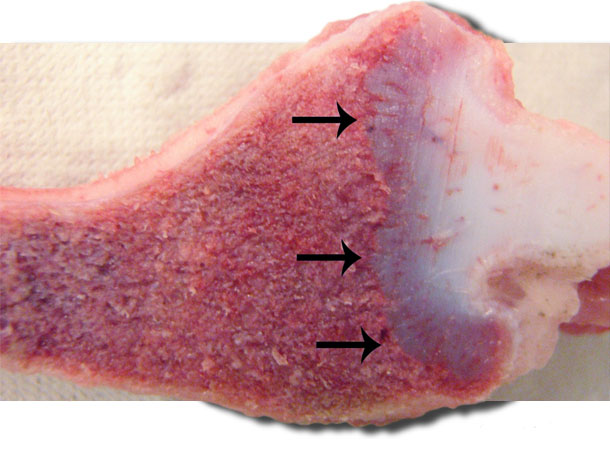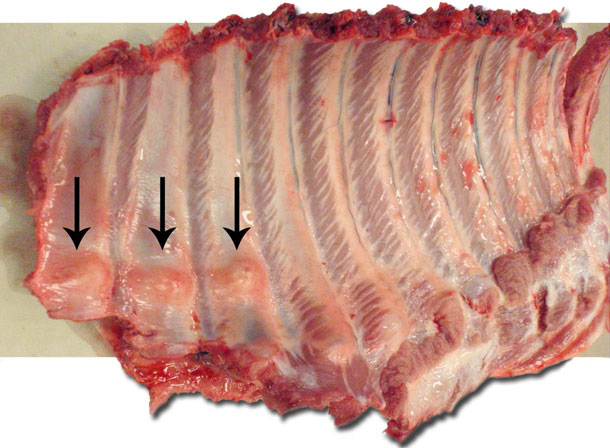Vitamin D is a fat soluble vitamin produced in the skin or supplied in the diet. Following absorption into the bloodstream, it is converted in the liver to 25-hydroxyvitamin D (25(OH)D), the major form of vitamin D found in blood. The 25(OH)D is then further metabolized by the kidney to 1,25-dihydroxyvitamin D (1,25-(OH)2D). This compound is actually a hormone that acts on intestinal cells to enhance calcium and phosphorus absorption for bone formation and other bodily functions. Without vitamin D, dietary calcium and phosphorus are only poorly utilized. We now also know from human, mouse and cattle studies that immune cells and muscle cells also require vitamin D for optimal function.
Vitamin D is normally produced following skin exposure to ultraviolet-B (UV-B) rays of the summer sun. In winter, the angle of the sun is too low (in high latitudes) to allow adequate UV-B to reach the skin of animals. Since most piglets (and humans too!) are raised in climate controlled housing and born year-round, direct access to sunshine is often limited, even in the summer. Fortunately, vitamin D can be added to diets to meet the animals' need for vitamin D.

Prior to weaning, sow's milk provides most if not all the nutrients the piglet will receive for maximal growth and health. Two notable exceptions to this are iron and vitamin D. Sow milk supplies very little of these important nutrients. Since sow milk lacks iron and piglets in climate controlled housing do not root around in soil, it is necessary to administer iron early in life to prevent anemia. Similarly, many piglets in confinement housing can become deficient in vitamin D resulting in bone microfractures and/or rickets by the time they are weaned.

Fig 1. Flared costochondral junction, rachitic rosary, with irregular and elongated growth cartilage (arrows).
In the last few years there seem to also be problems of vitamin D deficiency in older growing pigs. Affected pigs have poor bone strength that can lead to lameness, rickets with flared growth plates (fig 1) and bone fractures (figure 2); hypocalcemic paresis and tremors can also occur. In some instances, vitamin D deficiency can manifest itself as acute unexplained deaths. In many clinical cases the vitamin D was left out of the ration for a good length of time or perhaps was added but somehow oxidized before it reached the pigs.

Fig 2. Multiple distal rib fractures with callus formation (arrows).
Assessing vitamin D adequacy in the pig is best done by determination of circulating levels of 25(OH)D in serum. The test costs about $35 / sample and can be run thru the Iowa State University Diagnostic Laboratory. Indirect tests, such as bone ash, bone density, rib breaking strength, and/or serum analyte concentration (calcium and phosphorus) can provide insight to a metabolic bone condition if serum 25(OH)D cannot be done.
Swine with clinical rickets will generally have less than 5 ng 25(OH)D /ml serum at the time of diagnosis, and it is likely they have been low for some time to result in bone lesions. Swine maintaining more than 15 ng 25(OH)D /ml serum generally will not exhibit any clinical signs associated with decreased bone strength or have lesions (gross and microscopic) of rickets.
Work in humans, mice, and cattle suggests optimal bone mineralization, muscle development and immune function are observed when serum 25(OH)D concentrations are maintained above 30 ng/ml. Right now we have no data on the optimal level for these functions in pigs. It may be similar to these other species.




